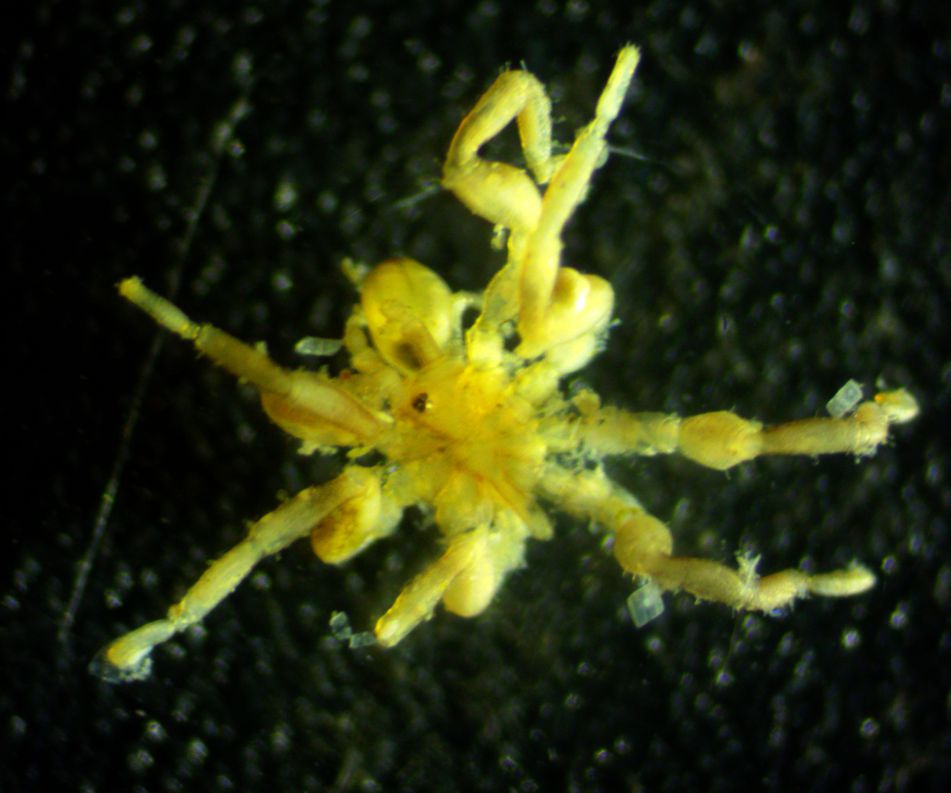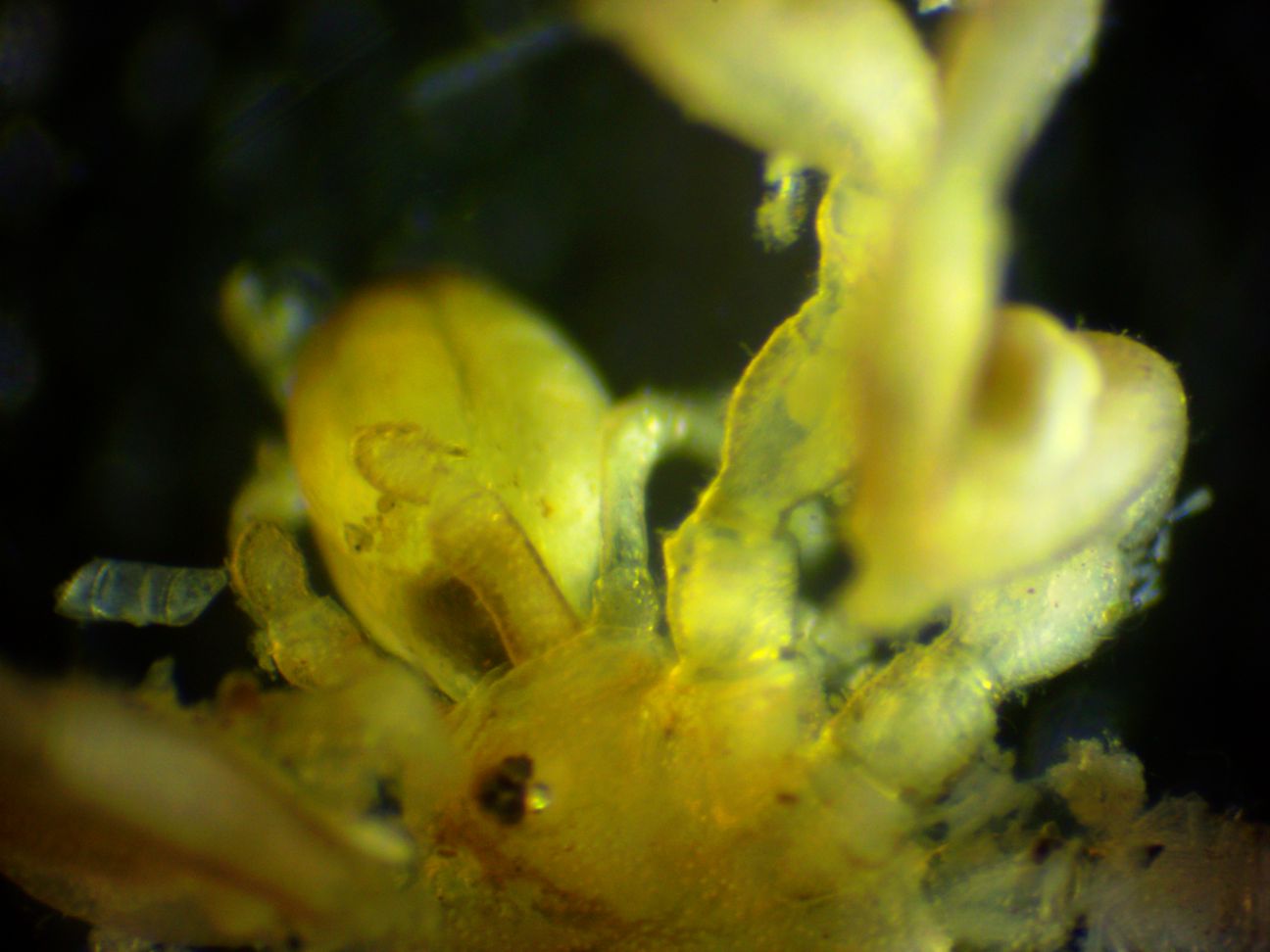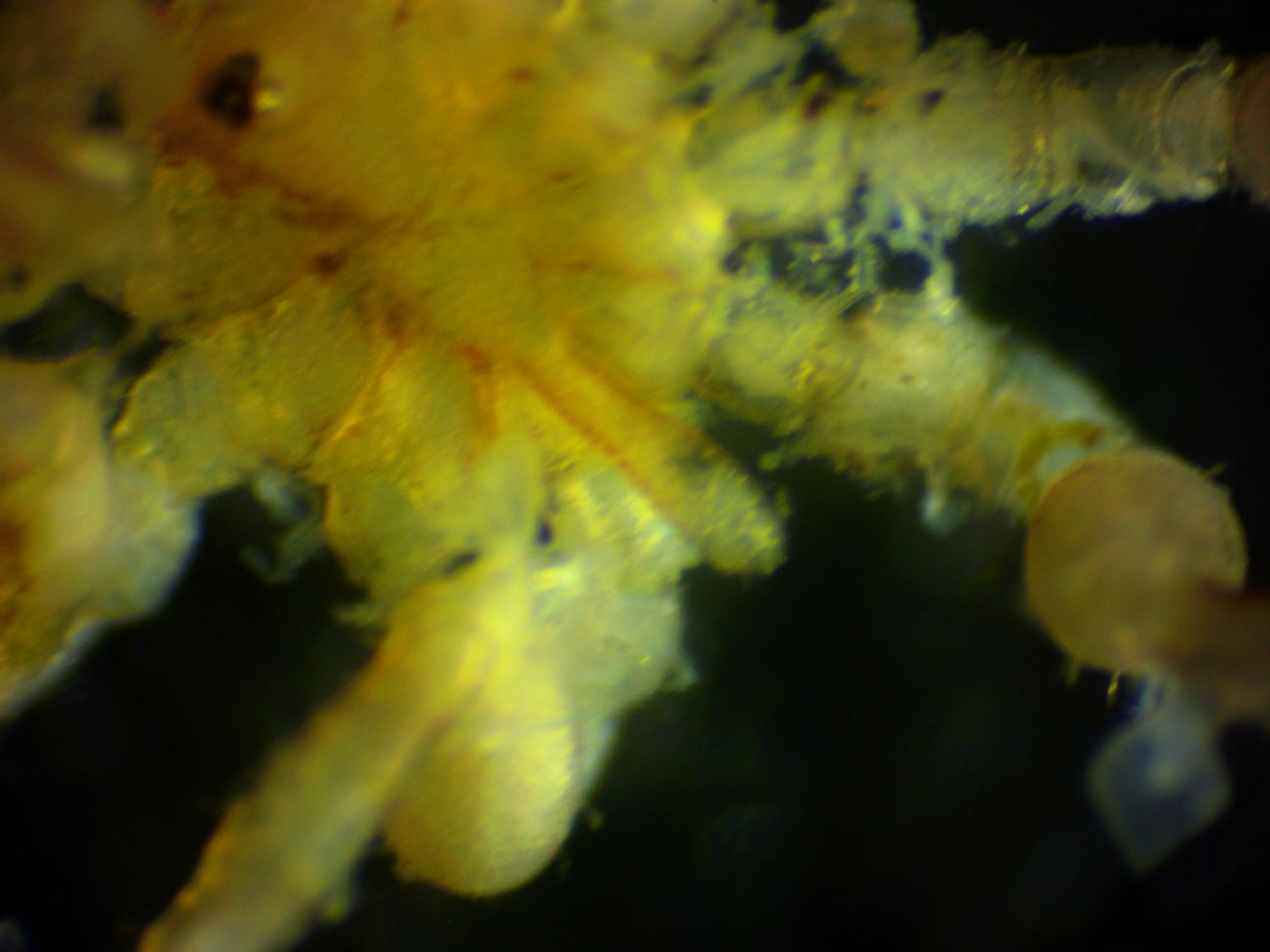Achelia latifrons (Cole, 1904)Common name(s): Sea spider |
|
| Synonyms:Ammothea latifrons |  |
|
Phylum Arthropoda
Subphylum
Chelicerata
Order Pantopoda
Family Ammotheidae
|
|
| Achelia latifrons found on an Epiactis prolifera anemone at Cape Flattery. The distance from the tip of the proboscis (top left) to the tip of the abdomen (bottom right) is 3 mm. Total leg span is 11 mm. | |
| (Photo by: Dave Cowles, July 2014) | |
Description: Order Pantopoda is the only Order in Class Pycnogonida. Family Ammotheidae is one of the largest and most variable families of pycnogonids. Members of Family Ammotheidae usually have chelifores (anterior appendages which arise from the cephalon and usually bear chelae), but some species have no chelifores or have no chelae on them. The palps have 1 to 10 articles. Both males and females in this family have 9 to 10-segmented ovigers, which are larger in males. This pycnogonid species has legs much longer than the body (proboscis + trunk). It has both chelicerae (chelifores) and pedipalps, but the chelicerae have just two articles (segments) and the second article is simply a knob which does not extend past the end of the proboscis (photo). The pedipalps have 8 articles. There are no short, fingerlike projections on the dorsodistal edges of the coxa of the first legs.
Note: Very little is said about this species in the scientific literature and is not mentioned at all in Carlton (2005). The detailed description in Child (1995) states that this species is widespread in the North Pacific and usually quite spiny. This individual is not particularly spiny so although it clearly fits this species in Kozloff's key I regard the species designation here as tentative.
How to Distinguish from Similar Species: A variety of local intertidal pycnogonids, such as Pycnogonum stearnsi, have thick, short legs not much longer than the proboscis + trunk. Several other Achelia species have fingerlike coxal projections; and Achelia chelata has chelae as adults. Ammothea verenae lives at hydrothermal vents.
Geographical Range: From Korea across the North Pacific and Aleutian Islands to central and perhaps southern California.
Depth Range: Intertidal to 479 m
Habitat: The genus Achelia is found in cold temperate and subpolar regions of the north and south Pacific ocean, including Antarctica. This individual was on an Epiactis prolifera anemone on the open coast.
Biology/Natural
History:
| Return to: | |||
| Main Page | Alphabetic Index | Systematic Index | Glossary |
References:
Dichotomous Keys:Kozloff, 1987, 1996
General References:
Scientific Articles:
Child,
C. Allan, 1995. Pycnogonida of the western Pacific
islands, XI:
Collections from the Aleutians and other Bering Sea islands,
Alaska.
Smithsonian Contributions to Zoology 569
Web sites:
General Notes and Observations: Locations, abundances, unusual behaviors:
This closeup of the head shows the eye turret, the proboscis (top left), the chelicerae (chelifores) next to the proboscis which are two-segmented and end with a knob rather than a chela, the basal segments of the palps, and the coxae of the first several legs. Note that there is no finger-like projection on the dorsodistal part of the coxa of the first leg.
In this closeup of the posterior body, the stub-like abdomen
projecting from the thorax can be seen. Several algal cells
are adhered
to the leg in the lower right.
Authors and Editors
of Page:
Dave Cowles (2014): Created original page
CSS coding for page developed by Jonathan Cowles (2007)
Salish Sea Invertebrates web site provided courtesy of Walla
Walla University

